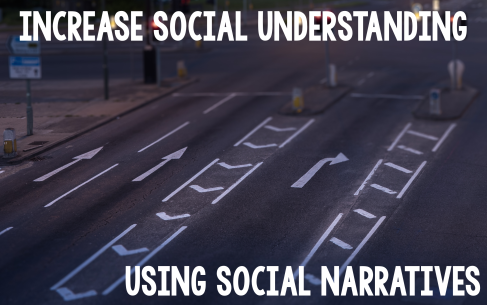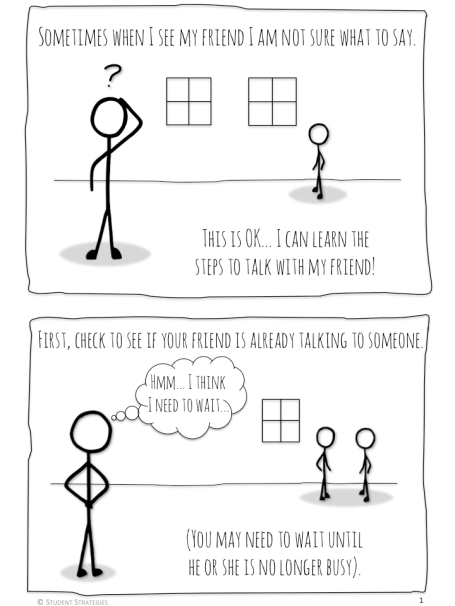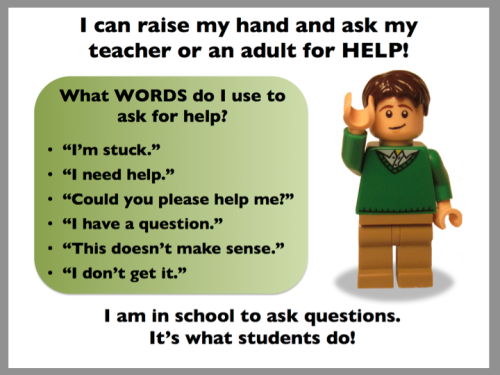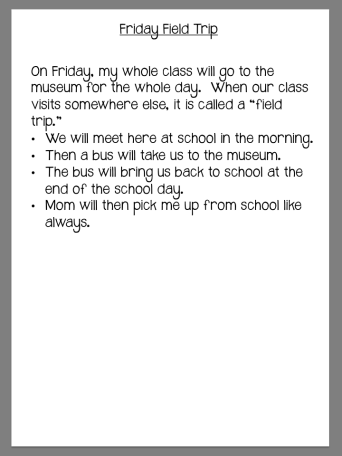 One of the most important skills we have is communicating effectively with our peers. This is the pathway to friendship. It is the means by which we thrive (or survive!) at social gatherings. It is how we navigate the workplace. For our students, it can be the difference between playing with peers at recess and sitting alone on the playground bench. Social interaction is part of succeeding and engaging in school and life.
One of the most important skills we have is communicating effectively with our peers. This is the pathway to friendship. It is the means by which we thrive (or survive!) at social gatherings. It is how we navigate the workplace. For our students, it can be the difference between playing with peers at recess and sitting alone on the playground bench. Social interaction is part of succeeding and engaging in school and life.
If we are to teach children to grow in peer communication, we must do it well. It will be one of the most important skills they ever learn. Consider these five (brief) points for laying a solid foundation for the children with whom you work:
1. Never assume. Children with social learning difficulties often don’t make sense of social interaction like typical children do. This means that every step needs to be taught and explained. Never assume that they see it like we do. Never assume that they understand why greetings are important or that they know not to interrupt another peer when they start talking. Social interaction is a part of living that does not come naturally to children with autism so we need to help them develop a new category for connecting with others.

2. Break it down. Every social interaction is comprised of many individual steps. Always strive to reduce peer interaction down into these small steps in order to increase understanding and keep things manageable. Be patient. Your student may be learning to greet others for a long time before he or she is ready to tackle simple conversation starters.
3. Rehearse, rehearse, rehearse. Much practice is required here. And just because a student does something once, does not mean that he or she has fully learned it and will always have it. As you likely have seen, students with autism can have days where they are quite “on,” demonstrating skills quite well. Other days, however, can seem like they never had the skill at all. The more teaching and practice the student has, the more he/she will gain the skills towards sustained application.
4. Use actual peers. All the time. Using social narratives, visuals and other teaching tools are helpful only so far as they are used in conjunction with real peer interaction. As you teach social interaction skills, have typical peers involved to practice with your students. Even better, have the typical peers teach your students and role-play. There is nothing like the power of positive peer influence. This also allows for natural learning and practice to take place outside of your classroom or office. Peers who work with your students can continue to interact with them in other settings throughout the day, increasing generalized learning.

5. Keep it visual. As you provide and build an understanding of social interaction with your students, keep a clear, visual record for them. Social narratives and talk/thought bubble conversation templates are a couple of strategies you can use. Also, keep these materials interactive by having the student fill in greeting and conversation ideas. Be sure to send a copy of these materials home in order to provide parents an opportunity to practice and review social interaction skills with their child.
Shown throughout this post are resources I have created to help children grow in these essential skills. These can be used individually with students, with small groups, or as smart board presentations for a whole class. They also serve as helpful resources to send home to parents so parents can support their child’s social learning.





